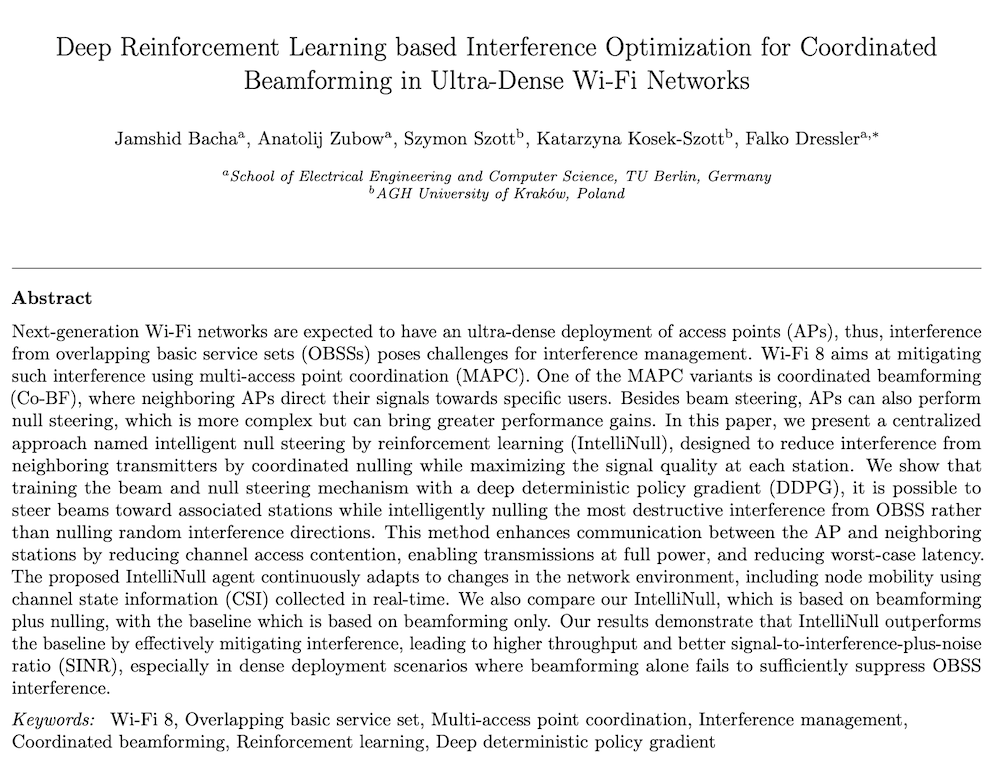Literature Database Entry
dressler2011research
Falko Dressler, Frank Kargl, Jörg Ott, Ozan K. Tonguz and Lars Wischhof, "Research Challenges in Inter-Vehicular Communication - Lessons of the 2010 Dagstuhl Seminar," IEEE Communications Magazine, vol. 49 (5), pp. 158–164, May 2011.
Abstract
Inter-Vehicle Communication (IVC) has become an extremely hot topic in network research, opening up new research challenges well beyond those of classical Mobile Ad Hoc Network (MANET) research. In October 2010, a Dagstuhl seminar has been organized bringing together many of the internationally leading experts in this field to discuss open issues and challenges related to IVC. This article reports the main findings of this meeting, that was set up to cover a wide range of topics. In particular, the following four areas were studied in working groups: Fundamental Limits and Opportunities of IVC, IVC Communication Principles and Patterns, Security and Privacy in IVC, and Simulation, IVC and engineered, Modeling. A general conclusion drawn is that IVC is now at a turning point where the first generation systems are and will soon be brought to market while, at the same time, IVC is experiencing the beginning of a new era characterized by a more fundamental research approach.
Quick access
Original Version ![]() (at publishers web site)
(at publishers web site)
Authors' Version ![]() (PDF on this web site)
(PDF on this web site)
BibTeX ![]()
Contact
Falko Dressler
Frank Kargl
Jörg Ott
Ozan K. Tonguz
Lars Wischhof
BibTeX reference
@article{dressler2011research,
author = {Dressler, Falko and Kargl, Frank and Ott, J{\"{o}}rg and Tonguz, Ozan K. and Wischhof, Lars},
doi = {10.1109/MCOM.2011.5762813},
title = {{Research Challenges in Inter-Vehicular Communication - Lessons of the 2010 Dagstuhl Seminar}},
pages = {158--164},
journal = {IEEE Communications Magazine},
issn = {0163-6804},
publisher = {IEEE},
month = {5},
number = {5},
volume = {49},
year = {2011},
}
Copyright notice
Links to final or draft versions of papers are presented here to ensure timely dissemination of scholarly and technical work. Copyright and all rights therein are retained by authors or by other copyright holders. All persons copying this information are expected to adhere to the terms and constraints invoked by each author's copyright. In most cases, these works may not be reposted or distributed for commercial purposes without the explicit permission of the copyright holder.
The following applies to all papers listed above that have IEEE copyrights: Personal use of this material is permitted. However, permission to reprint/republish this material for advertising or promotional purposes or for creating new collective works for resale or redistribution to servers or lists, or to reuse any copyrighted component of this work in other works must be obtained from the IEEE.
The following applies to all papers listed above that are in submission to IEEE conference/workshop proceedings or journals: This work has been submitted to the IEEE for possible publication. Copyright may be transferred without notice, after which this version may no longer be accessible.
The following applies to all papers listed above that have ACM copyrights: ACM COPYRIGHT NOTICE. Permission to make digital or hard copies of part or all of this work for personal or classroom use is granted without fee provided that copies are not made or distributed for profit or commercial advantage and that copies bear this notice and the full citation on the first page. Copyrights for components of this work owned by others than ACM must be honored. Abstracting with credit is permitted. To copy otherwise, to republish, to post on servers, or to redistribute to lists, requires prior specific permission and/or a fee. Request permissions from Publications Dept., ACM, Inc., fax +1 (212) 869-0481, or permissions@acm.org.
The following applies to all SpringerLink papers listed above that have Springer Science+Business Media copyrights: The original publication is available at www.springerlink.com.
This page was automatically generated using BibDB and bib2web.







